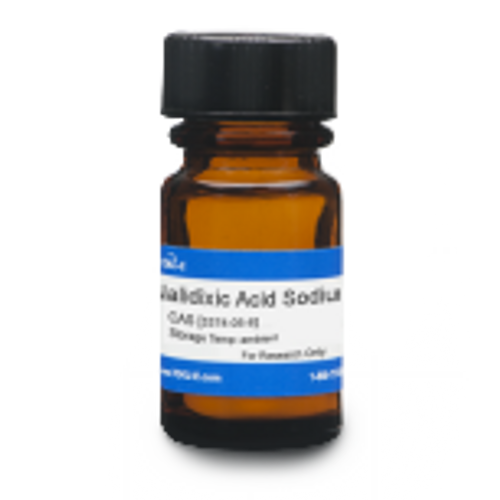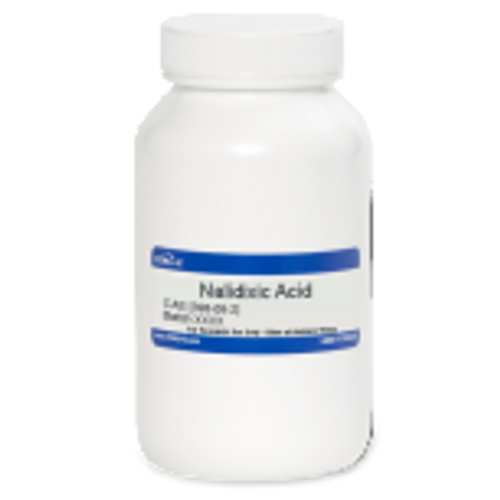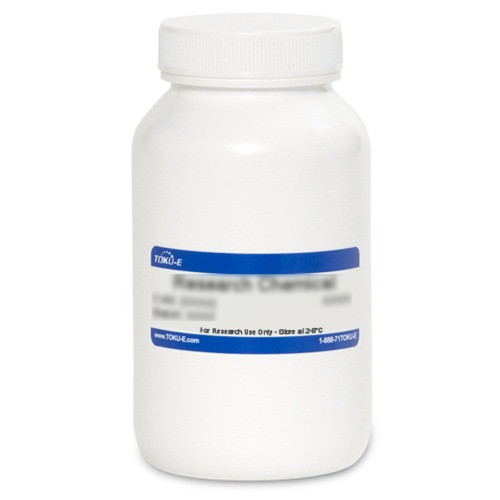Nalidixic Acid Sodium is a synthetic naphthyridone antibiotic developed by Sanofi Aventis. It is similar in structure and mechanism to quinolones, with a 1,8-naphthyridine nucleus containing 2 nitrogen atoms (unlike quinoline that contains a single nitrogen atom). It is an inhibitor of bacterial DNA polymerase and avian myeloblastoma virus reverse transcriptase. The compound can be used to study bacterial division and apoptosis research. Nalidixic Acid Sodium is sparingly soluble in water.
| Mechanism of Action | Nalidixic Acid indirectly inhibits protein synthesis by binding DNA and interfering with enzymes involved in DNA replication and transcription. In a study with avian myeloblastosis virus RT activity, the presence of adenine in the template made for more efficient inhibition |
| Spectrum | Nalidixic Acid is a broad-spectrum antibiotic with activity against Gram-negative and Gram-positive bacteria. The action is primarily bacteriostatic at low levels, and bactericidal at higher concentrations. It is commonly used against bacteria responsible for urinary tract infections. |
| Microbiology Applications | Nalidixic Acid is commonly used in clinical in vitro microbiological antimicrobial susceptibility tests (panels, discs, and MIC strips) against gram positive and gram negative microbial isolates. Medical microbiologists use AST results to recommend antibiotic treatment options. Representative MIC values include:
E. coli 2 µg/mL - 8 µg/mL |
| Molecular Formula | C12H11N2NaO3 |
| References |
Aoyama H (1991) Avian myeloblastosis virus reverse transcriptase inhibition by Nalidixic Acid. Mol. Cell Biochem. 108(2):169-174 PMID 1723488 Kiianitsa K and Maizels M (2014) used Nalidixic Acid Sodium from TOKU-E in: Ultrasensitive isolation, identification and quantification of DNA–protein adducts by ELISA-based RADAR assay. Nucl. Acids Res. 42(13):e108 PMID 24914050 (editor note: please have the PMID # hyperlink to the following URL: https://pubmed.ncbi.nlm.nih.gov/24914050/ ) Lesher GY, Froelich EJ and Gruett MD, Bailey JH and Brundage RP (1962) 1,0-Naphtyridine derivatives: A new class of chemotherapeutic agents. J. Med. Pharm. Chem. 5:1063-1065 PMID 14056431 Levitt M et al. (1973) Studies on the mechanism of action of Nalidixic Acid. Antimicrob. Agents Chemother. 4(4):479-486 Pedrini, A.M., Geroldi, D., Siccardi, A. and Falaschi, A. (1972) Studies on the mode of action of Nalidixic Acid. European Journal of Biochemistry, 25: 359-365 PMID 4625117 |







